 |
 |
 |
| |
PrEP Use Up in Australian MSM With Regular Partners-
Especially if They Also Have Casual Partners
|
| |
| |
IAS 2023, July 23-26, 2023. Brisbane
Mark Mascolini
Australian men who have sex with men (MSM) and have regular partners increasingly relied on preexposure prophylaxis (PrEP) to prevent transmission of HIV from 2018 through 2022 [1]. MSM with regular partners who also had condomless sex with casual partners used PrEP most frequently.
Australian gay and bisexual MSM with casual partners have turned increasingly to biomedical prevention (PrEP) over recent years. Net biomedical HIV prevention coverage rose to almost 80% in 2022 [2]. Less is known about trends in HIV prevention among MSM with regular partners.
To address that issue, researchers from the Centre for Social Research in Health at the University of New South Wales tapped the 2018-2022 Gay Community Periodic Survey, a repeated behavioral assessment of MSM in Australia during LGBTQ festival periods. The survey estimated trends in condom use, condomless sex with regular partners, and any effective HIV prevention strategy.
Survey respondents numbered 8574 in 2018, 9271 in 2019, 8479 in 2020, 7065 in 2021, and 8276 in 2022. Over those years the proportion of men reporting casual partners fell from 62.5% to 54.9%. But the proportion with regular partners stayed stable (69.1% in 2018 and 67.6% in 2022), as did the proportion with regular and casual partners (42.4% in 2018 and 41.7% in 2022).
From 2018 through 2022, the proportion of respondents who called themselves gay fell from 92% to 85%, average age rose from 36.9 to 39.0 years, the proportion born overseas edged up from 29% to 32%, the proportion employed full time inched up from 67% to 72%, while the proportion with an HIV test in the past year fell from 70% to 62% and the proportion with 10 or more sex partners dropped from 22% to 18%. During the 2018-2022 study period, the proportion of MSM reporting they were HIV-negative ranged from 83% to 86%, the proportion HIV-positive from 7% to 9%, and the proportion with unknown HIV status from 22% to 18%.
Next the researchers assessed changes in percentages of men with regular partners who reported different HIV risk characteristics. The biggest 2018-2022 percentage increase came in the group reporting condomless anal intercourse with regular partners (CAIR), HIV-negative status, and using PrEP (16.6% to 33.9%), while proportions reporting other frequent HIV risk characteristics dropped: CAIR, non-HIV-positive, and HIV-negative partner (35.9% to 30.1%), no anal intercourse (20.5% to 15.5%), consistent condom use (12.3% to 9.0%), and CAIR, HIV-positive, and undetectable viral load (6.2% to 5.3%).
When the researchers divided the men into two groups-condomless anal intercourse with casual partners, and no casual partners-the biggest 2018-2022 jump in HIV risk characteristics involved men with casual partners who reported CAIR, HIV-negative status, and PrEP use (38.0% to 67.1%).
Finally the investigators charted 2018-to-2022 percentage changes in groups characterized by HIV prevention coverage with regular and casual partners. The largest group consisted of men with both regular and casual partners and with prevention coverage for both (44.9% in 2018 to 53.2% in 2022). The next two largest groups were men with regular partners only and prevention coverage for partners (37.3% to 38.3%) and men with both regular and casual partners but only regular partners covered (12.3% to 6.4%).
The researchers believe their findings confirm low and continually declining risk of HIV transmission between Australian MSM who are regular partners. Men with regular partners used PrEP with increasing frequency over this period, with the greatest PrEP use among partnered men who also had condomless sex with casual partners.
References
1. Broady T, Chan C, MacGibben J, et al. Increased HIV prevention coverage among Australian gay and bisexual men with regular partners: Results of national behavioural surveillance, 2018-22. IAS 2023, July 23-26, 2023. Brisbane.
2. Broady, Cama, Rance, Lafferty, Brener, Treloar, Holt, Mao. Annual Report of Trends in Behaviour: Viral Hepatitis, HIV, STIs and Sexual Health in Australia. Sydney: Centre for Social Research in Health, University of New South Wales. 2023.
https://www.unsw.edu.au/research/csrh/our-projects/annual-report-of-trends-in-behaviour
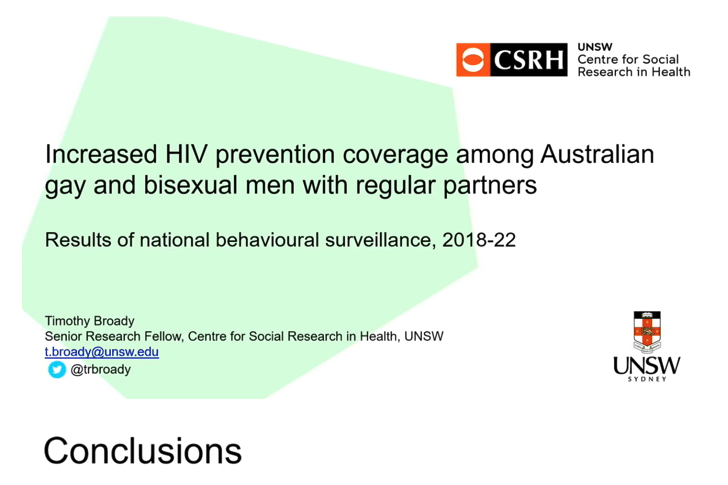
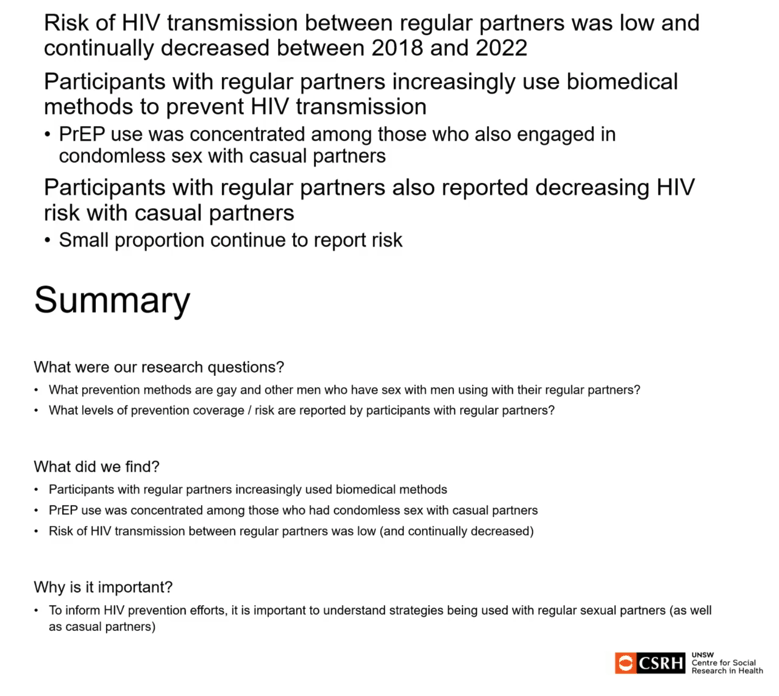
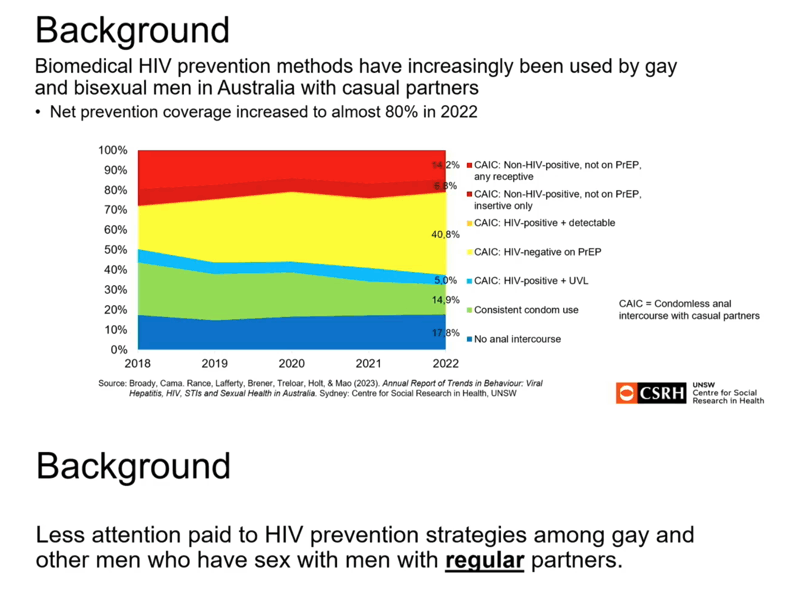
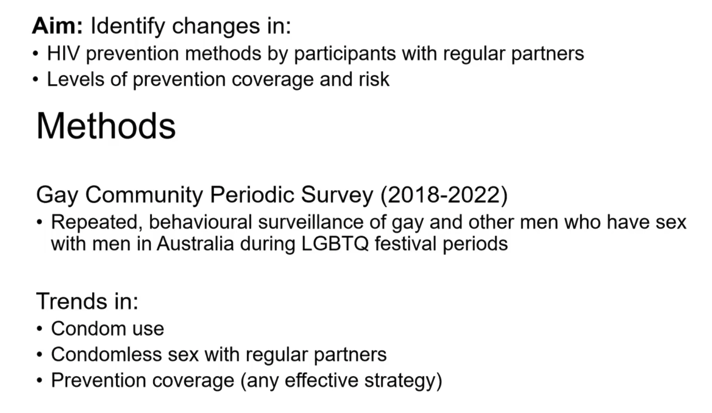
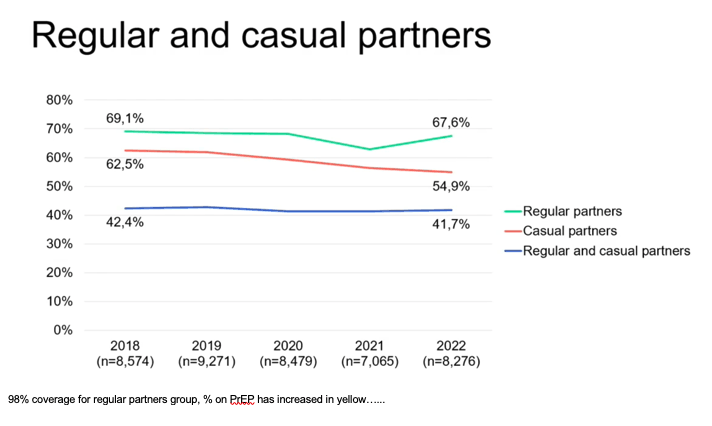

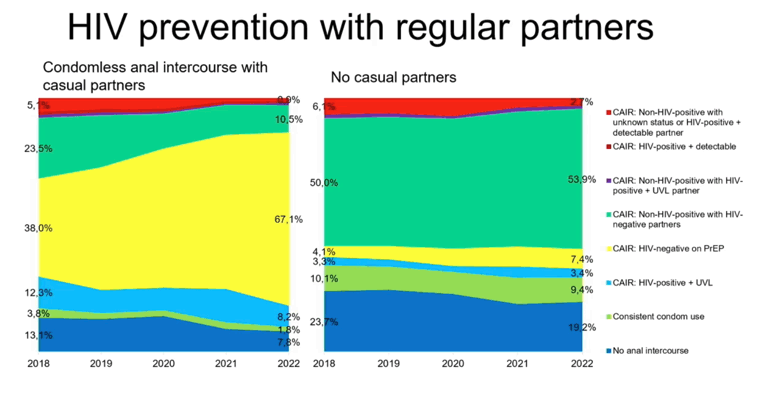
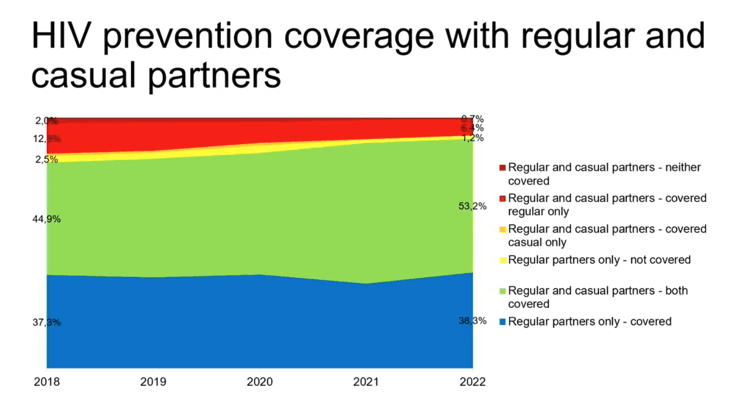
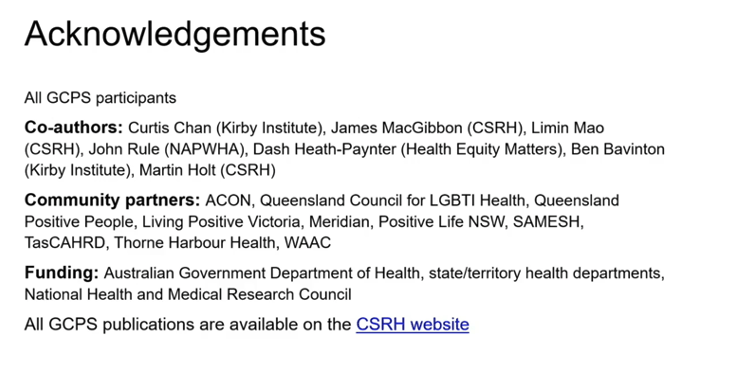
|
| |
|
 |
 |
|
|